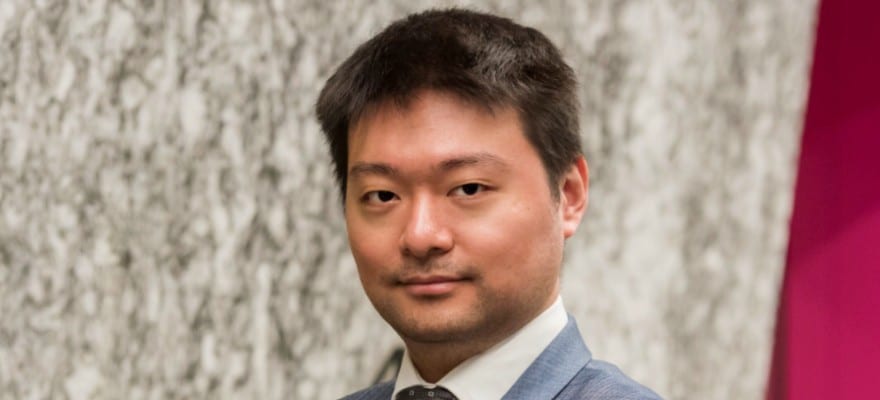Cross-border Payments are a perennial problem for both individuals and businesses alike. And though many new service providers have risen over the past twenty years, issues remain.
Hidden fees and bad Exchange rates are often the name of the game and can leave a user feeling as though they got cheated. Companies such as Stripe may have pushed things in the right direction, but there is still much to be improved upon.
One company that is trying to change all of this is InstaReM. Launched in 2015, the company allows businesses and individuals to make cross-border payments.
To get a better understanding of the company’s operations and, in the wake of a very successful funding round, to see what it’s plans are for the future we spoke to the company’s CEO and Co-Founder Prajit Nanu.
Can you briefly summarise what it is that InstaReM does?
InstaReM is a Singapore-headquartered cross-border payments company, with presence across Asia-Pacific, North America, and Europe. Starting its operations in Australia in 2015, today, InstaReM has a presence in 40 countries including Australia, Singapore, Hong Kong, United States, Canada, Malaysia, India, and Europe.
We have a global payment mesh, which is being leveraged by financial institutions, SMEs and individuals to make cross-border payments. InstaReM powers local payments to more than 55 countries, and with its 8000+ banking partnerships, it is able to reach out to 3.21 billion banked people across the globe.
We also serve larger institutional and corporate clients with our MassPay product – an international business payments platform with bulk and customized payments facility, multi-currency payments and accounts and a host of other time and cost-efficient payment features.
One of the most frustrating things I have dealt with when sending and receiving money from abroad is a lack of transparency surrounding costs. Can you explain how your fee structure works and why you believe it is superior to other companies?
Our fee structure is pretty straightforward and transparent. InstaReM converts currency at Zero-Margin FX rates. It offers mid-market rates sourced directly from Reuters and does not add any margins on FX conversion at all, unlike most banks and money transfer services. We charge a nominal fee (varying between 0.25% and 1%) to cover the costs of processing the transactions and this is very visibly shown on a user’s screen. The recipient receives exactly the same amount as displayed on the sender’s screen.
If a customer provides us evidence of a competitor offering a better transfer amount for a particular transaction at a particular time, we promise to make good of the shortfall.
InstaReM has focused a great deal on remittances. How does that change your ‘modus operandi’ as a payments company?
True, InstaReM is only focused on cross-border payments both for individuals (remittances) and for businesses. Cross-border money transfers are quite different from the other type of money transfers such as local payments via banks and digital wallets. Cross-border money transfers – whether individual or corporate/institutional - are subject to additional regulatory oversight over and above to what applies to local or domestic money transfers, given the possibilities of menacing breaches such as money laundering, terrorist financing, etc.
Moreover, the motives why individuals send money abroad are widely different from the reasons people transfer money domestically. For instance, Indian expats living in the UK would send money to India to maintain their family back home, or to pay off their EMIs, etc. That generally wouldn’t be typical reasons for domestic money transfers. Thus, the way we communicate to our existing or prospective clients, also changes.
South East Asia is becoming a more and more attractive market to operate in for many businesses. Is this true of payments? If so, do you think InstaReM has something of an edge on your western competitors who may not be based in the region and lack local knowledge and know-how?
Southeast Asia is where the action is and it is becoming a more and more attractive market to operate in because it offers a huge potential for innovation and growth. Especially in Payments. A large fragment of South East Asian population is still unbanked or underbanked.
Interestingly, growing penetration of the internet and breakthroughs in mobile technologies offer real hope for financial inclusion by enabling easy, safe and low-cost payments in Asia. Given the potential of Financial Technology or Fintech, to accelerate the process of financial inclusion, governments and financial regulators in the South East Asian countries are more open to encourage innovations in the financial technology. And this scenario also suits a growing tech-savvy South East Asian population.
As a case in point, the Fintech landscape in Singapore, where InstaReM’s global headquarter is located, enjoys strong support from its central bank and regulatory body, the Monetary Authority of Singapore (MAS).
In 2016, MAS laid out a roadmap that would help transform the country into a Smart Financial Center where innovation and technology would be pervasive. Leveraging its regulatory role, the MAS has fostered a conducive and supportive environment for innovation by private-sector players, and the establishment and growth of fintech start-ups and next-generation disruptors.
This attractive and open ecosystem has given rise to Singapore achieving the fastest Fintech growth rate in Asia as well as the world. Additionally, MAS has also announced deregulation of the process where banks needed to seek approval of the regulatory body before making investments in permissible non-financial business. This means greater freedom for banks to invest in or start an arm of business that mainly refers to e-payment platforms. Regulators in a number of SEA countries are taking a similar approach towards domestic and cross-border payments.
Notwithstanding regional variations, it certainly helps to be based in the region and to have local knowledge etc. to get started in the region. However, these are not great differentiators. Ultimately, it’s the value that you offer to the stakeholders or end-users that counts. We are focused at offering real value to our individual and institutional users.
You recently received a bunch of money ($20 million) and it looked like you are going to raise $45m total. Can you elaborate on any plans you have for enterprise and retail solutions?
The Series B round of funding of US$ 13 million in July 2017 helped us to gain a foothold in the new markets, particularly on the consumer side of the business and we grew from 4 markets to 8.
Now, our focus is going to be on the institutional side of the business. The new funding will be partly used for marketing and investing in the brand, and partly for bringing new talent on board to help us grow within our existing spectrum. Of course, we will continue to invest in product development.
The new funding will help us accelerate our growth in our existing markets and enable us to enter new markets in Japan and Indonesia, where we are expecting to receive licenses by the end of the year. We are looking to acquire licenses in some of the high-traffic corridors in Asia-Pacific as well as other parts of the world. We are also looking to further expand our technology product, and client service teams in our operations office in Mumbai, India. We are working on a new product currently, the development of which would be undertaken in India. The funding would help us drive resources towards the same.
One of the major investors in your latest funding round was the VC arm of Indonesian telecoms company Telkom. How did that deal come about and how are they going to be helping you access the Indonesian market or in any other business areas?
InstaReM has made a strategic collaboration in Indonesia with various Telkom business units to further enhance InstaReM’s distribution and outreach across the country. Telkom has an overall customer database of 170 million across the Indonesian archipelago, which would strategically help InstaReM setting up its footprint in Indonesia.

















